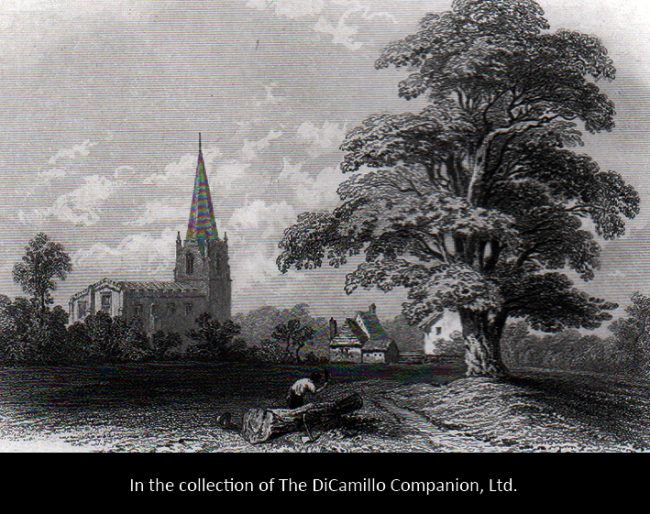
The site of the House from an 1854 engraving
House & Family History: Scrooby was a moated medieval palace of the archbishops of York, who stayed here during tours of their diocese. King John visited Scrooby in 1212 and Henry VIII stayed here overnight and held a Privy Council meeting in the House in 1541. Cardinal Wolsey stayed in disgrace at Scrooby in September 1530. Circa 1636-37 most of the House and its outbuildings were destroyed, per a demolition order granted by Charles I. A fragment of the House was rebuilt circa 1750 as a manor farmhouse; it is this red brick and ashlar Grade II-listed house that stands today. Scrooby is thought to have been the home of William Brewster, who sailed with the “Mayflower” in September 1620 and became a Pilgrim Father. Brewster was the senior elder and religious leader of the Plymouth Colony in Massachusetts and the initiator of the first Thanksgiving in 1621. Though it’s likely that the building Brewster lived in was demolished, there are a number of plaques on the current house that commemorate Brewster and the “Mayflower," as well many reminders of the famous ship's voyage in the village of Scrooby -- from the street named Mayflower Avenue to the restaurant The Pilgrim Fathers.
Garden & Outbuildings: On July 4, 1558 Nicholas Heath, Archbishop of York, gave instructions for the Gatehouse and some outbuildings to be demolished.
House Listed: Grade II
Park Listed: Not Listed
Past Seat / Home of: Nicholas Heath, Archbishop of York, 16th century.
Current Ownership Type: Individual / Family Trust
Primary Current Ownership Use: Private Home
Ownership Details: Today a farmhouse.
House Open to Public: No
Historic Houses Member: No